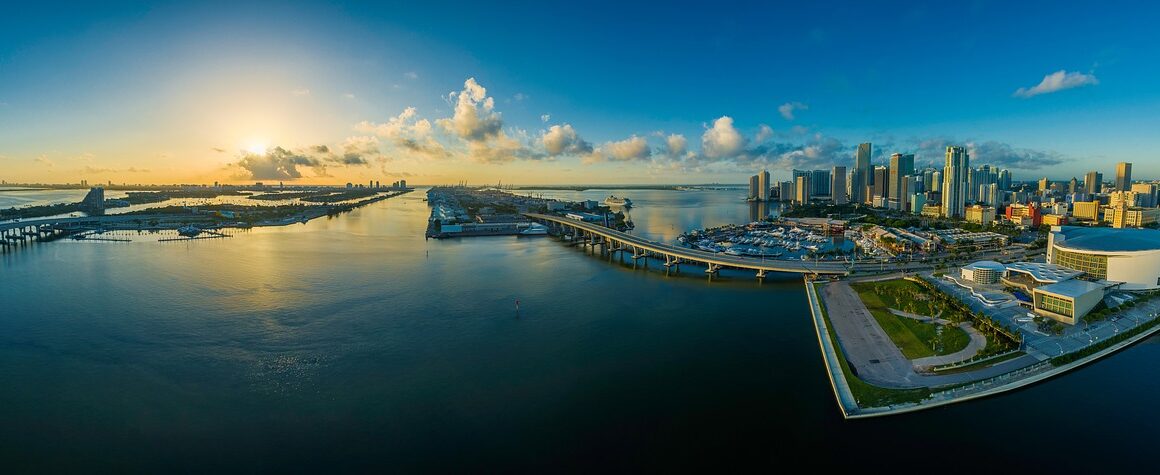Inflation Hedging through Infrastructure Investments
Inflation can erode purchasing power, making it essential to find effective hedging strategies. One attractive option involves infrastructure investments, particularly for institutional investors seeking stable returns. Infrastructure projects often come with long-term contracts that include inflation indexing, providing a hedge against rising prices. These investments tend to generate steady cash flows, which can help protect against inflationary pressures. Additionally, infrastructure assets such as energy pipelines, toll roads, and airports often have inelastic demand. This characteristic means that their revenues may remain stable even during economic downturns. Furthermore, as governments seek to stimulate their economies during inflationary periods, they typically increase spending on public infrastructure. This creates more opportunities for investment, thereby potentially increasing profits for investors. Overall, incorporating infrastructure investments into a diversified portfolio can provide not just growth but also a meaningful hedge against inflation uncertainties. Asset classes may vary, but the consistent underlying demand for infrastructure ensures relatively stable performance amidst economic fluctuations. Investors should thus consider these factors when allocating resources toward inflation-hedging strategies.
Benefits of Infrastructure as a Hedge
Investing in infrastructure projects often comes with several benefits beyond merely acting as a hedge against inflation. These assets typically offer stable, predictable cash flow over time, making them appealing for long-term investors. Most infrastructure assets possess intrinsic value due to their crucial role in everyday life. For example, utility companies supply essential services such as electricity, gas, and water, which are always in demand. This consistent demand allows these assets to maintain revenue levels, even amid economic challenges. Furthermore, infrastructure investments also possess an inflation linkage feature. Many financing agreements here include terms that allow adjustments based on inflation metrics. This mechanism is invaluable for preserving asset value over time. Additionally, the long lifespan of infrastructure projects means they can serve investors for decades, offering potential capital appreciation. Moreover, the diversification benefits of such investments can balance more volatile areas of a portfolio. Strategic exposure to infrastructure may also enhance overall portfolio returns, providing investors another avenue for growth and stability. As a result, it is no surprise that asset managers increasingly advocate for integrating infrastructure investments.
When investing in infrastructure, various sectors can be explored, including transportation, energy, and water. Investing in these sectors offers opportunities for long-term inflation protection. For instance, transportation infrastructure, like highways and railways, not only facilitates logistics but also often comes with government contracts that adjust for inflation. Similarly, energy infrastructure—such as utility plants—also thrives on steady, rising demand as populations grow. Investing in renewable energy infrastructure is particularly noteworthy due to the global shift towards sustainable practices. Renewable energy ensures future growth potential and aligns with environmental, social, and governance (ESG) criteria, which many investors are increasingly prioritizing. Furthermore, water infrastructure, encompassing dams and treatment plants, is another essential component. With increasing global water scarcity, investments in this sector are poised for growth, and most assets here also feature inflation-linked pricing. These factors make this sector resilient amidst economic fluctuations, providing much-needed stability for investors. By diversifying across these essential sectors within infrastructure, investors can protect their portfolios against inflation while meeting vital societal needs. Attention to sector-specific trends can further enhance investment strategies in infrastructure.
Risks of Infrastructure Investing
While infrastructure investments show great potential as inflation hedges, they are not without risks. One crucial risk involves the high initial capital requirement, as large sums are needed upfront. Securing adequate funding can sometimes make it challenging to initiate projects. Additionally, regulatory changes pose another significant risk. Since many infrastructure investments involve substantial public sector collaboration, shifts in government policies or priorities may alter project feasibility. These changes can affect future cash flows and investment returns adversely. Furthermore, economic downturns can also impact the performance of infrastructure assets. During recessions, demand may decrease, affecting revenues for projects heavily reliant on user fees or tolls. Another risky aspect of infrastructure investing is that many projects can take years or even decades to complete. Thus, potential investors must be patient and consider the long-term horizon. Investors should also address potential liquidity issues that may arise from sheer investment size. Identifying and nurturing partnerships with committed stakeholders is vital for securing success. Overall, mitigating these risks requires thorough due diligence and careful planning to ensure effective infrastructure investments.
Recent trends reveal a growing interest in public-private partnerships (PPPs) for infrastructure development. These collaborations combine the efficiency of the private sector with public goals, offering unique investment opportunities. PPPs often distribute risk effectively, allowing private firms to invest in public projects while sharing the burden of financing. This arrangement attracts investors who might have reservations about individual project risks. Additionally, PPPs can accelerate innovation through private sector expertise, which can enhance project delivery efficiency and effectiveness while reducing long-term costs. Many governments increasingly rely on PPPs for essential infrastructure developments, further solidifying their role in economies. As public budgets face limitations, collaborating with private investors offers a viable alternative to fund necessary infrastructure projects. Moreover, infrastructure investments also tend to benefit from increasing focus on climate resilience. Projects designed to withstand environmental challenges can contribute positively to both profitability and sustainability. Aligning investments with global sustainability goals enhances their long-term appeal, making them attractive to socially conscious investors. Therefore, understanding current trends in infrastructure development can lead to favorable opportunities for investors seeking long-term inflation protection and prospects.
Conclusion: Choosing Infrastructure Investments
In conclusion, infrastructure investments stand out as effective inflation hedging strategies. Their characteristics often ensure stable cash flows amidst rising prices, making them attractive for long-term investors. However, success relies on careful consideration of project selection, risk management, and regulatory environment. As the world continues shifting towards sustainable practices, infrastructure investment opportunities will multiply, further protecting portfolios against inflation. Investors should remain vigilant and research to select promising projects that align with their financial goals. It is essential to analyze factors such as demand, financing, and public partnerships. By maintaining a well-diversified portfolio that includes infrastructure investments, individuals can foster financial stability and growth in uncertain economic conditions. Additionally, engaging with advisors experienced in infrastructure can provide valuable insights into navigating this complex investment landscape. They can identify potential opportunities and threats while aligning investments with personal risk profiles. Ultimately, the question of whether to include infrastructure investments in one’s portfolio should hinge on their long-term financial strategy. As inflationary pressures continue to reshape markets, exploring these options can lead to prudent investment decisions.
Investors looking to hedge against inflation must thus optimize their strategies, including infrastructure investments. As economies evolve, the importance of robust infrastructure continues to rise alongside the challenges posed by inflation. Policymakers are aware of these dynamics, spurring further public investment into infrastructure. Consequently, the windows for investment opportunities are continuously expanding. Investors willing to engage in thorough due diligence can tap into this ever-evolving market to secure returns that outpace inflation. Additionally, understanding local economic prospects can also present investors with distinct advantages in infrastructure investing. Regional initiatives and government support can enhance the potential for project success. Investors must also remain flexible and adaptive, as the conditions in the global economy continually shift. Monitoring economic indicators helps gauge the timing and viability of investments in infrastructure. With the proper approach, infrastructure investments can become an essential component of an overall inflation-hedging strategy. With appropriate diversification across sectors, their potential can be maximized in the face of inflationary pressures. Ultimately, the key is to align investments with informed strategies that address current and future economic realities.





